| Title | Size | Downloads |
|---|---|---|
| MIB.zip | 501.30 KB | |
| HDM2_1.22.zip | 47.26 MB | |
| H3C HDM2-1.22(0502A8TA)Release Notes.xlsx.zip | 8.04 KB | |
| H3C HDM2-1.22 Release Notes.pdf | 1.26 MB |
|
H3C HDM2-1.22 Release Notes |
|
|
Copyright © 2023 New H3C Technologies Co., Ltd. All rights reserved.
No part of this manual may be reproduced or transmitted in any form or by any means without prior written consent of New H3C Technologies Co., Ltd.
Except for the trademarks of New H3C Technologies Co., Ltd., any trademarks that may be mentioned in this document are the property of their respective owners.
The information in this document is subject to change without notice.
Contents
Hardware and software compatibility matrix
Upgrade restrictions and guidelines
Software feature and command updates
Resolved problems in HDM2-1.22
Resolved problems in HDM2-1.21
Resolved problems in HDM2-1.20
Resolved problems in HDM2-1.18
Resolved problems in HDM2-1.17.01
Resolved problems in HDM2-1.17
Resolved problems in HDM2-1.15
Resolved problems in HDM2-1.14
Appendix B Updating software for rack servers
(Optional) Backing up the current configuration
Handling firmware update failures
Deleting the browsing history in Edge
Deleting the browsing history in Firefox
Deleting the browsing history in Chrome
Deleting the browsing history in Safari
Appendix D Resolved vulnerabilities
Resolved vulnerabilities in HDM-1.14
List of tables
Table 2 Hardware and software compatibility matrix (for the R4950 G6)
Table 3 Hardware and software compatibility matrix (for the R5350 G6)
Introduction
This document describes the features, restrictions and guidelines, open problems, and workarounds for version HDM2-1.22. Before you use this version on a live network, back up the configuration and test the version to avoid software update affecting your live network.
Use this document in conjunction with the documents listed in "Related documentation."
Screenshots in this document are for illustration only.
Version information
Version number
Image file names and the MD5 checksum:
HDM2_1.22_signed.bin: b1a1691a577d0e9677c5916ca0b2f42c
| NOTE: You can access the HDM Web interface of the server to identify the HDM version in the Device information section of the Dashboard page. |
Supported languages
HDM supports the following languages:
Chinese.
English.
Supported browsers
As a best practice, use one of the following browsers:
Edge 108 or higher.
Firefox 90.0.0 or higher.
Chrome 80 or higher.
Safari 14 or higher.
Supported hardware platforms
H3C UniServer R4700LE G6
H3C UniServer R4900 G6 Ultra
H3C UniServer R4900 G6
H3C UniServer R4900LE G6
H3C UniServer R4950 G6
H3C UniServer R5350 G6
Hardware and software compatibility matrix
CAUTION: To avoid an update failure, use the following tables in this section to verify the hardware and software compatibility before performing an update. |
Table 1 Hardware and software compatibility matrix (for the R4900 G6 Ultra/R4900 G6/R4900LE G6/R4700 G6/R4700LE G6)
Item | Specifications |
Product family | H3C UniServer R4900 G6 Ultra/R4900 G6/R4900LE G6/R4700 G6/R4700LE G6 |
BIOS | Version 6.00.21 or later |
CPLD | Version 003 or later |
iMC | iom E0709 |
FIST | Version 2.55 or later |
FIST SMS | Version 1.55 or later |
iFIST | Version 1.57P01 or later |
Table 2 Hardware and software compatibility matrix (for the R4950 G6)
Item | Specifications |
Product family | H3C UniServer R4950 G6 |
BIOS | Version 6.30.17 or later |
CPLD | Version 007 or later |
iMC | iom E0709 |
FIST | Version 2.55 or later |
FIST SMS | Version 1.55 or later |
iFIST | Version 1.57P01 or later |
Table 3 Hardware and software compatibility matrix (for the R5350 G6)
Item | Specifications |
Product family | H3C UniServer R5350 G6 |
BIOS | Version 6.30.17 or later |
CPLD | Version 003 or later |
iMC | iom E0709 |
FIST | Version 2.55 or later |
FIST SMS | Version 1.55 or later |
iFIST | Version 1.57P01 or later |
Upgrade restrictions and guidelines
Make sure the software versions are compatible with each other. For more information, see "Hardware and software compatibility matrix."
As a best practice, back up the configuration before you update the firmware. For more information, see "(Optional) Backing up the current configuration."
To update both HDM and the BIOS, update HDM first.
Make sure the server operates correctly or is powered off during BIOS or HDM update.
During the update, make sure the network connection is available and do not refresh the Webpage.
To avoid HDM or operating system errors, do not power on or power off the server during the firmware update.
After the firmware is updated, delete the browsing history before you re-log in to HDM. For more information, see "Clearing the browser cache."
Upgrade recommendation
This version is optional for update.
Hardware feature updates
HDM2-1.22
HDM2-1.22 added support of the following hardware options for the R5350 G6:
MCX75310AAS-NEAT 400G NDR network adapter
HDM2-1.21
None.
HDM2-1.20
None.
HDM2-1.18
HDM2-1.18 added support of the following hardware options for the R4900 G6:
A800 GPU
HDM2-1.17.01
None.
HDM2-1.17
None.
HDM2-1.15
None.
HDM2-1.14
First release.
Software feature and command updates
For information about command changes, see H3C HDM2 IPMI Basics Command Reference and H3C HDM2 Redfish API Reference.
HDM2-1.22
None.
HDM2-1.21
None.
HDM2-1.20
None.
HDM2-1.18
None.
HDM2-1.17.01
None.
HDM2-1.17
None.
HDM2-1.15
None.
HDM2-1.14
First release.
MIB updates
For more information, see H3C Server SNMP Agent MIB Reference.
IPMI changes
For more information, see H3C HDM2 IPMI Basics Command Reference.
Redfish changes
For more information, see H3C HDM2 Redfish API Reference.
Operation changes
Restrictions and cautions
Restrictions
If no media images are mounted, the KVM window automatically closes when the HDM Web session times out.
Each browser can establish only one session with HDM. If you attempt to establish two concurrent sessions from the same browser with different usernames, the first session will automatically end when the second session is established.
For the new HDM firmware to take effect, restart HDM after update. The system will write the flash memory during the restart.
Guidelines
This version is available for all supported servers in this document.
Make sure pop-ups are allowed on the browser.
Open problems and workarounds
List of resolved problems
Resolved problems in HDM2-1.22
202306251198
Symptom: Exporting configuration from HDM and then importing it without making any changes can cause the network configuration not to update for 5 minutes.
Condition: This symptom might occur if you export configuration from HDM and then import it without making any changes.
Resolved problems in HDM2-1.21
202306160493
Symptom: After you perform managed hot removal and hot insertion of an H3C-proprietary OCP network adapter on an R4900 G6 server, the network adapter information in HDM is displayed as N/A.
Condition: This symptom might occur after you perform managed hot removal and hot insertion of an H3C-proprietary OCP network adapter on the R4900 G6 server.
202306130725
Symptom: HDM cannot obtain the CPU temperature information if the R4950 G6 server is installed with only one processor.
Condition: This symptom might occur if the R4950 G6 server is installed with only one processor.
Resolved problems in HDM2-1.20
202306021550
Symptom: The 9540 storage controller installed on the R4900 G6 server cannot be identified after BMC is restarted.
Condition: This symptom might occur if you restart BMC when the R4900 G6 is installed with the 9540 storage controller.
Resolved problems in HDM2-1.18
202305160350
Symptom: HDM reports a rating mismatch error on power supplies when the R4900 G6 server is not powered on.
Condition: This symptom might occur, because the event log might mistakenly report load imbalance if the server is powered off and both power supplies have power outputs with a sum between 60 W and 100 W.
Resolved problems in HDM2-1.17.01
202305090206
Symptom: The BMC restarts abnormally after the stress test is restarted on the R4900 G6 Ultra server with the 25SFF drive backplane.
Condition: This symptom might occur if the R4900 G6 Ultra server is installed with the 25SFF drive backplane.
Resolved problems in HDM2-1.17
202302221699
Symptom: In Legacy mode of R4900 G6, screen distortion occurs when H5 KVM self-starts and enters PXE.
Condition: This symptom might occur if you set the Legacy mode, specify network as the first boot option, save the configuration, and then restart to enter PXE.
Resolved problems in HDM2-1.15
202304111883
Symptom: A process restarts after an in-band stress test is performed on creating and deleting logical drives on the R4900 G6 server.
Condition: This symptom might occur if an in-band stress test is performed on creating and deleting logical drives on the R4900 G6 server with the 9560 storage controller.
Resolved problems in HDM2-1.14
First release.
Troubleshooting
To obtain troubleshooting information, access the H3C official website at https://www.h3c.com/en/Support/Resource_Center/EN/Home/Severs/00-Public/Maintain/Troubleshooting/H3C_Servers_TG/.
Related documentation
Documentation set
H3C Servers Firmware Upgrade Guide.
H3C Servers HDM2 User Guide.
Obtaining documentation
Access the most up-to-date H3C product documentation on the World Wide Web at http://www.h3c.com:
1.Click https://www.h3c.com/en/Support/Resource_Center/Technical_Documents/.
2.Select a product category and model to obtain the documentation of the product.
Technical support
To obtain support services, contact H3C Support at [email protected].
Category | Features |
Web UI | Web interface in both Chinese and English Online help Compatible with Edge 108, Chrome 80, Firefox 90, Safari 14, and later versions |
IPMI | IPMI 2.0, compatible with DCMI |
Redfish | Redfish (version 1.5.0) |
SNMP | SNMPv1, SNMPv2c, and SNMPv3 Authentication and encryption for SNMPv3 SNMP trap |
Unified control | Device adding and removal Device status query Power control HDM access H5 KVM remote console |
LCD display | Touchable 3.5-inch LCD display optional for some server models HDM and BIOS firmware versions Health status of the server and its components Management port network settings, including DHCP enablement, IPv4 address, network adapter mask, and default gateway Restoration of administrator account information |
Intelligent security bezel | Use of lighting effect to indicate system health and power load status |
System information | Product information (product name, serial number, and configurable asset label) Hardware and status information about components, including processors, memory, storage, fans, power supplies, network adapters, PCIe modules, GPU modules, and FC HBAs CUPS information (CPU, memory, and I/O CUPS dynamic load factors used to indicate running service composition) |
Sensors | Sensor information display History temperature, current, voltage, and fan speed curves Temperature heatmaps in 3D view |
Resource monitoring | Processor, memory, and drive usage monitoring and alarming with FIST SMS installed Threshold configuration |
Health diagnosis | Viewing the health status of the server system Fault and predictive failure alarms about processors, memory, PCIe devices, storage controllers, storage media, fans, and power supplies Viewing the current POST code and all POST codes generated during the current startup Reboot reason query |
Log management | HDM event log (info, minor, major, and critical severity levels) HDM operation log, including audit log, firmware update log, hardware update log, and configuration log SDS log (supporting time range-based log filtering and SDS log encryption) Log download |
Log reporting | SNMP trap based on module OID or event OID Alert email notification by severity levels Syslog settings, such as server port number, transmission protocol, and TLS encryption transmission Event log report configuration through Redfish event subscription |
Server U disk | Log download upon USB disk insertion |
Local serial port and SOL connection | Connection mode for the local serial port and SOL connection: BIOS, smart network adapter, and mezzanine RAID controller. |
BSoD screenshots | Blue screen of death screenshots for Windows operating systems |
Video replay | Downloading, deleting, and playing videos that record system crash, reset, or shutdown events |
Alert policies | NMI control MCA policy: Server restart upon IERR occurrence |
RemoteXDP | Viewing and debugging server processors, an alternative to Jtag XDP |
Device management | Intelligent fan speed adjustment and fan speed mode selection Overtemperature protection LEDs, including the UID, power state LED, and health LED Diagnostic panel Network adapter information obtaining through MCTP, including MAC address, connection status, and speed information FC HBA information obtaining, including temperature, link status, and speed DCPMM information obtaining, including DCPMM temperature, controller temperature, and remaining life |
Storage information | Collection of information about storage controllers and storage media Configuration of logical drives managed by LSI storage controllers (excluding 9300, 9310, and 9500) and P460 and H460 PMC storage controllers Status configuration of physical drives managed by LSI storage controllers (excluding 9300, 9311, and 9500) Obtaining information about NVMe drives, including NVMe status, slot number, and read/write lifetime |
Boot options | Boot mode and boot option for the next startup Validity period for the next boot mode and option |
Power profile | Power actions: Force system reset, force power-off, graceful power-off, power-on, and force power-cycle. Power-on policy: Always power on, always power off, restore last power state, and power-on delay Power match protection: Input control of a mismatched power supply and alarm generation History power curve |
Power control | Power supply mode: Active/standby and active/active Power supply operating mode: Performance, balanced performance, balanced power, and power Processor power states, including P-states and T-states. Power capping for Intel and AMD processors |
Remote control | Remote server access KVM remote consoles, including shared mode and dedicated mode H5 KVM remote consoles, including shared mode, dedicated mode, and encrypted mode Remote image mounting Virtual file folders |
VNC | Dedicated mode and shared mode Password complexity check |
Dual network interface backup | Concurrent connections with both the HDM dedicated port and shared port for management link backup Bonding mode NCSI port autosensing Network port autosensing |
Network port | IPv4 and IPv6 DHCPv4 and DHCPv6 VLAN DNS and registration by DHCP Client FQDN and host name |
USB Wi-Fi | Connecting a Xiaomi USB Wi-Fi adapter to the G6 server to provide the wireless hotspot service for HDM |
NTP | DHCP time synchronization Time synchronization with the server |
LLDP | Obtaining information about all switches in the local network LLDP frame sending |
Security | Local user management, including interface privilege configuration User-group defined user privileges (three predefined user groups and five custom user groups) Enhanced password complexity Configuring, filtering, and deleting sessions Service configuration, including the service port and maximum number of sessions SSL certificate upload, generation, and viewing |
Domain users | LDAP user authentication AD authentication |
Platform Firmware Resiliency (PFR) | Firmware protection, detection, and restoration by using the Intel PFR |
Two-factor authentication | Using DKEY token, one-time password (OTP) servers, and GM encryption algorithm to provide two-factor authentication |
Network firewall | Whitelist and blacklist based on IP address, time range, and MAC address |
Configuration management | HDM2, BIOS, or RAID configuration import and export Restoring HDM factory default |
Firmware update | In-band firmware update Out-of-band firmware update Firmware update for HDM2, BIOS, CPLD, LCD, and power supply Primary/backup BMC firmware switchover |
Appendix B Updating software for rack servers
The following information describes how to update the HDM firmware from the HDM Web interface for the R4900 G6 server.
Screenshots in this section are for illustration only. They might vary as the software version changes.
Hardware Device Management (HDM) is a microprocessor embedded in the server to provide server management and control. You can update HDM from the HDM Web interface without affecting server operation.
1.Open a browser, and enter the HDM management IP address in the https://hdm_ip_address format in the address bar. In this example, the HDM management IP address is 192.168.1.2.
2.On the login page, enter the username and password, and then click LogIn.
The default username is admin and the default password is Password@_.
Figure 1 HDM login page
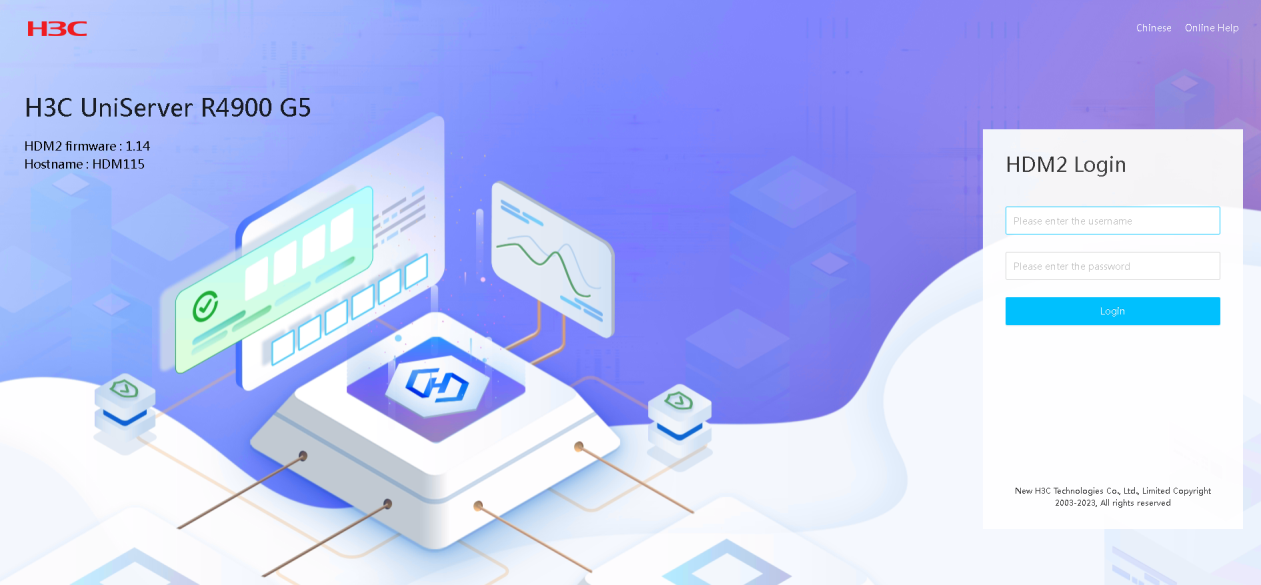
(Optional) Backing up the current configuration
As a best practice, back up the current configuration in case the update causes a configuration loss.
To back up the current configuration:
1.On the top navigation bar, click O&M Diagnosis.
2.In the left navigation pane, select Manage Configuration.
Figure 2 Backing up the current configuration
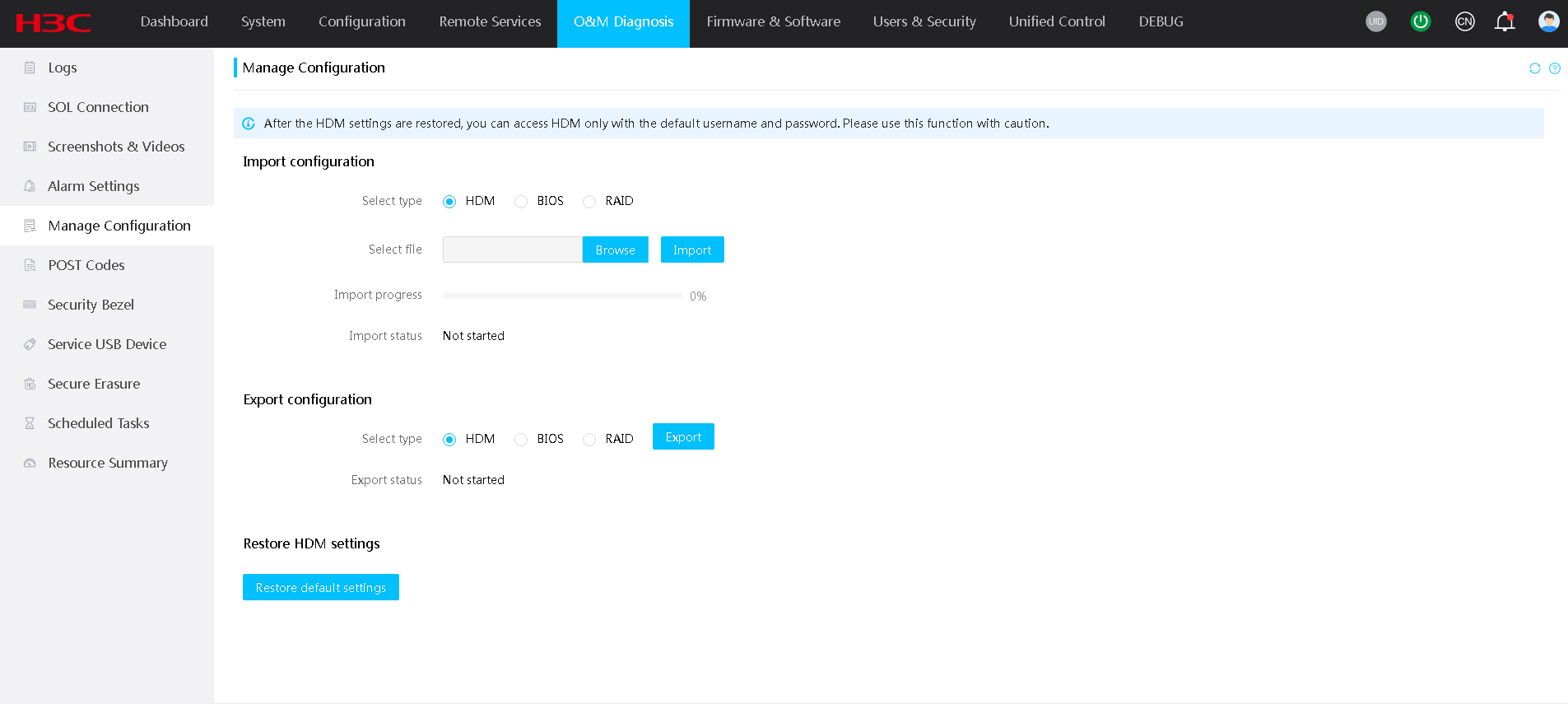
3.Click Export to save the configuration locally.
CAUTION: Do not refresh the page during the update. Do not power on or power off the server during the update. |
To update the HDM firmware:
1.On the top navigation bar, click Firmware & Software.
2.In the left navigation pane, select Update Firmware.
3.In the work pane, perform the following tasks:
a.Select an image upload method.
b.Select the new firmware image file (.bin file).
c.(Optional.) Select an MD5 file.
d.Click Next.
Figure 3 Specifying the new HDM firmware image
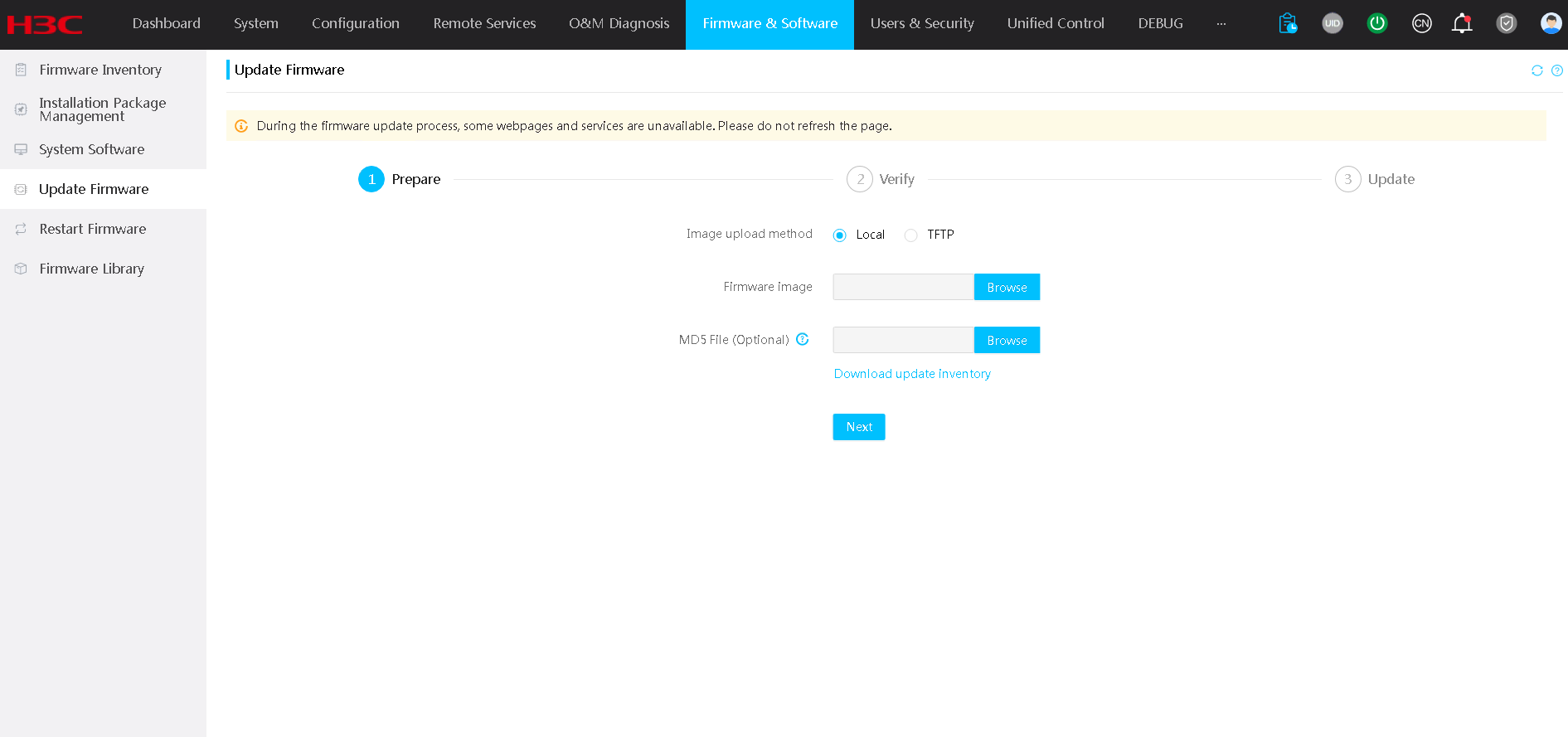
4.Verify firmware information.
On this page, select the method to reboot the server after the update is complete. You can have the server automatically restart immediately. Alternatively, you can choose Manually to manually restart the server.
CAUTION: Do not enable restoring factory default, unless otherwise required by the new version. The Restore factory default option removes all user configured settings when HDM starts up with the new firmware. When you select this option, make sure you understand its impact on the services. |
Figure 4 Displaying the image upload progress
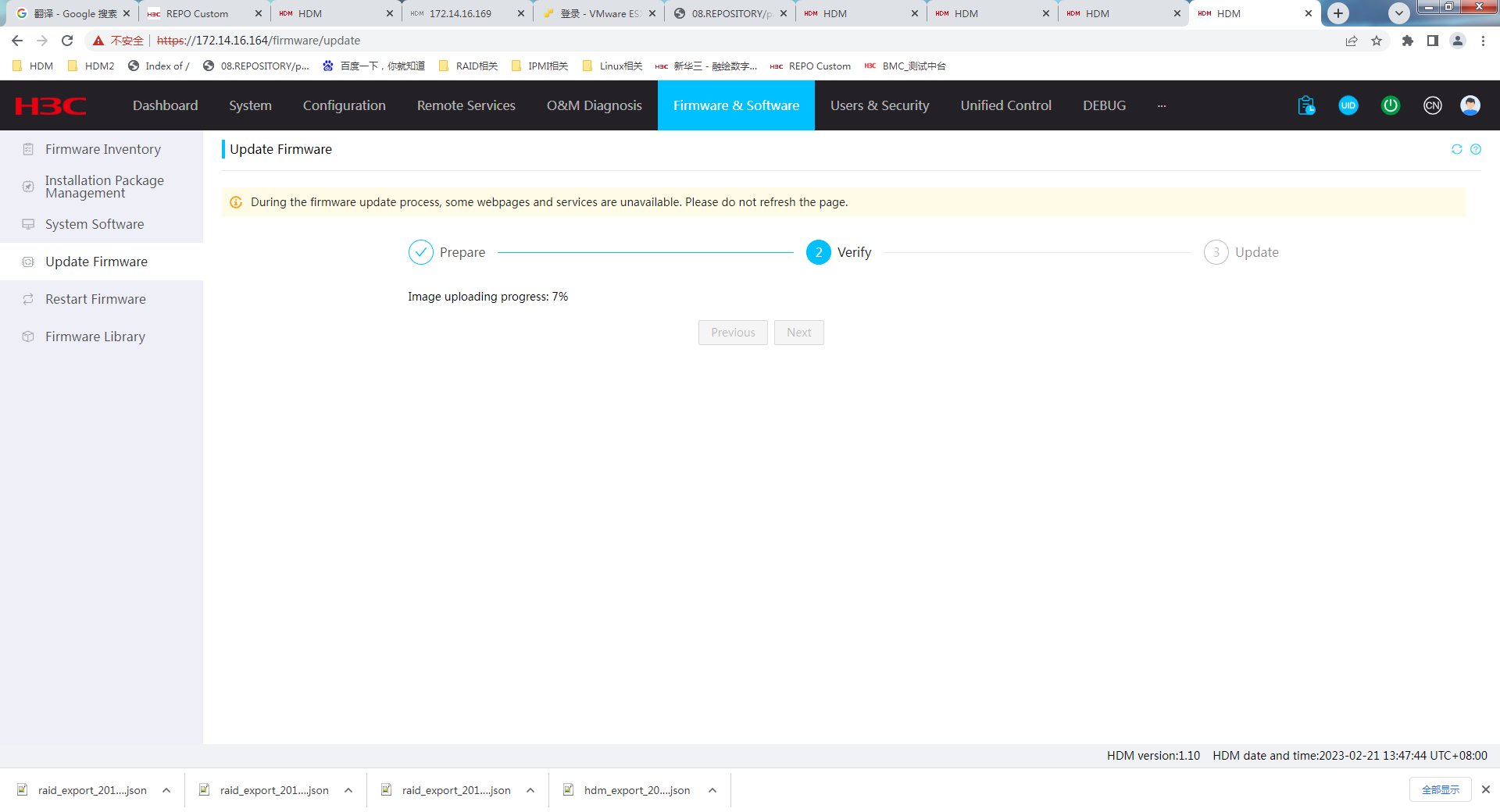
Figure 5 Verifying the HDM firmware image version
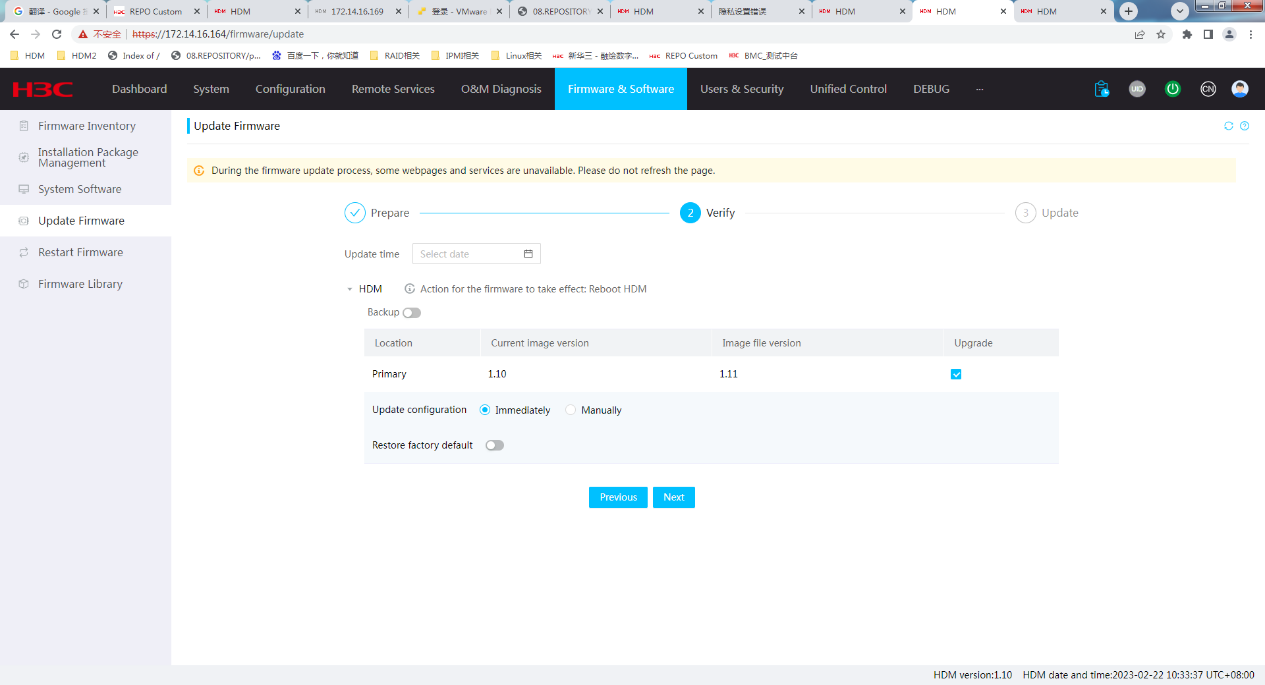
5.Follow the system instructions to complete the update.
Figure 6 Upgrade start confirmation
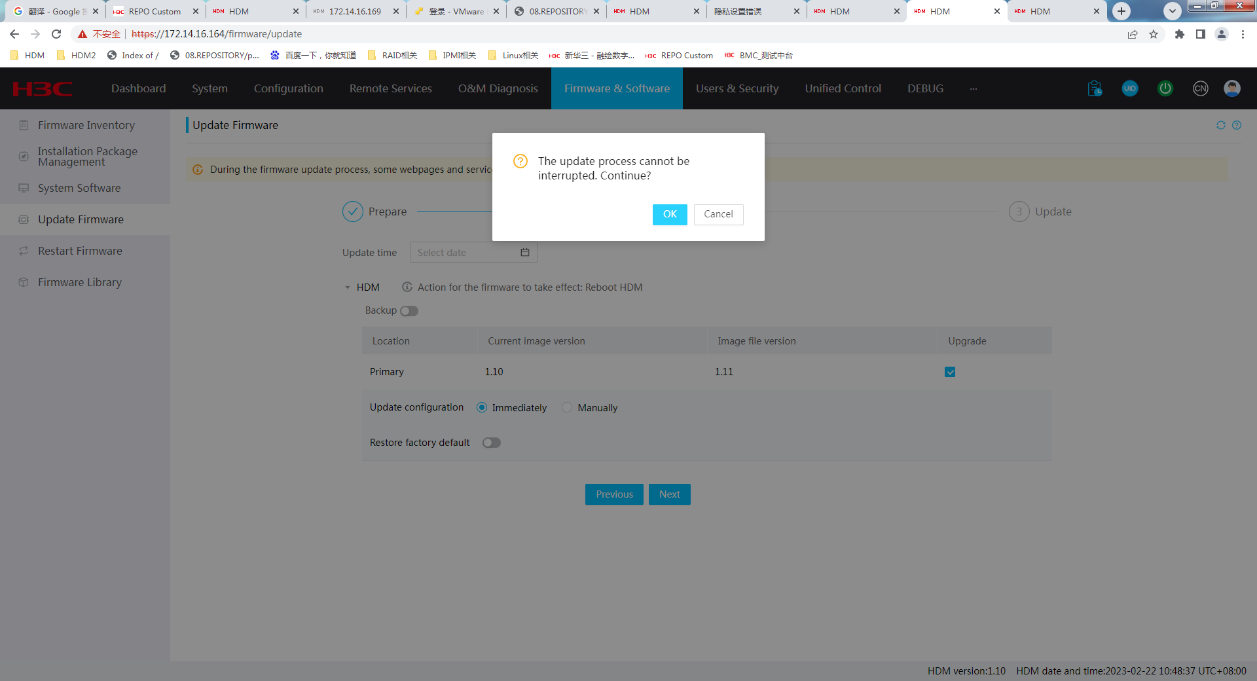
6.Restart HDM if you selected Manually.
a.On the top navigation bar, click Firmware & Software.
b.In the left navigation pane, select Update Firmware.
c.Click Restart HDM.
Figure 7 Restarting HDM
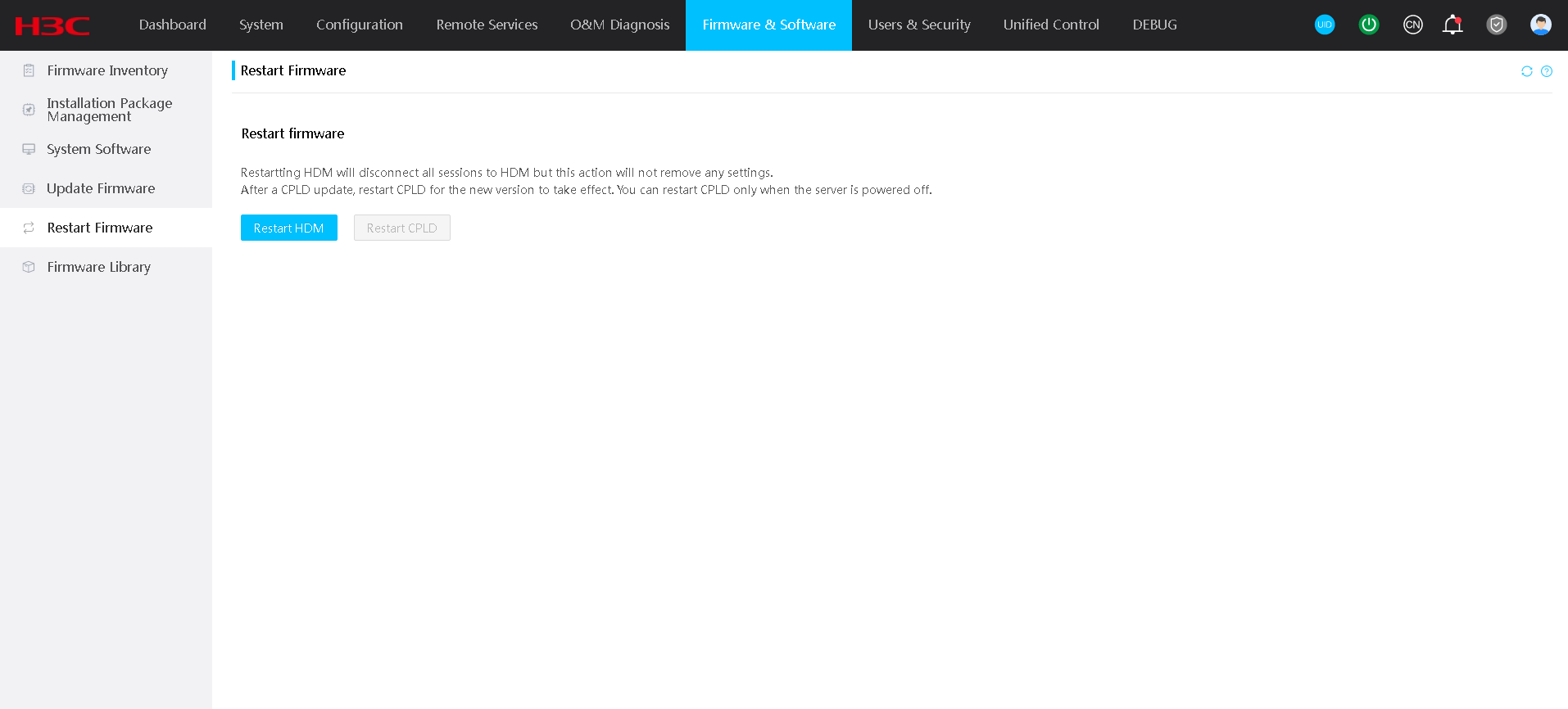
7.Relog in to HDM. Verify that the primary image has been updated on the Dashboard page.
Figure 8 Verifying that the primary HDM firmware image has been updated

8.After HDM restarts, relog in to HDM and repeat the update process. Make sure both the primary and backup images are updated to the same version.
Handling firmware update failures
If a firmware update fails, the system starts up with the original firmware version.
To resolve the firmware update failure issue:
1.Verify that the firmware image file is compatible with your server model and is not corrupt. Download the desired image file again if the image file is incompatible with the server or is corrupt.
2.Verify that the HDM client and the HDM server have a stable network connection.
Deleting the browsing history in Edge
1.Click the Settings and more icon, and then select Settings from the menu that opens.
Figure 9 Menu options
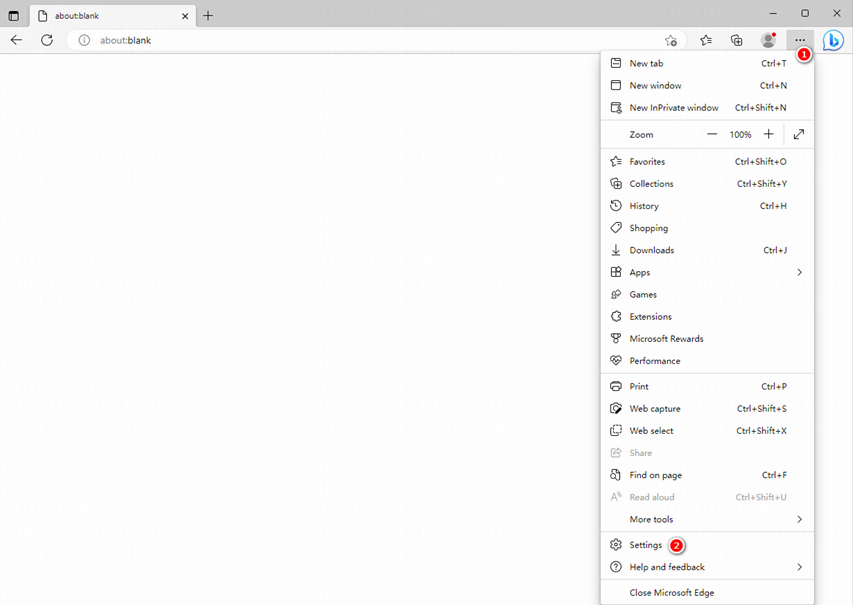
2.Select Privacy, search, and services, and then click Choose what to clear. In the dialog box that opens, click Clear now.
Figure 10 Choosing what to clear
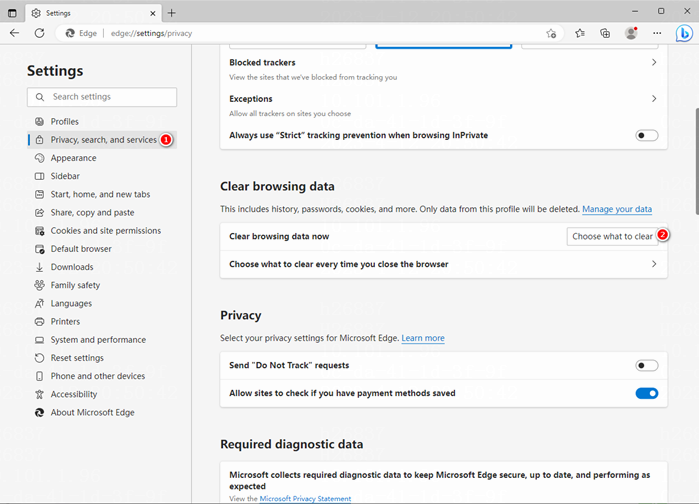
Figure 11 Clearing all history records
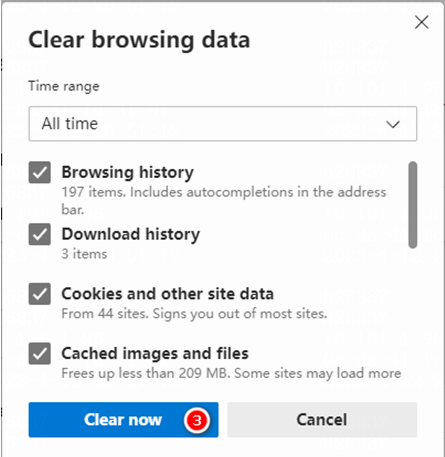
Deleting the browsing history in Firefox
1.Click the Open application menu icon, and then select Settings from the menu that opens.
Figure 12 Menu options
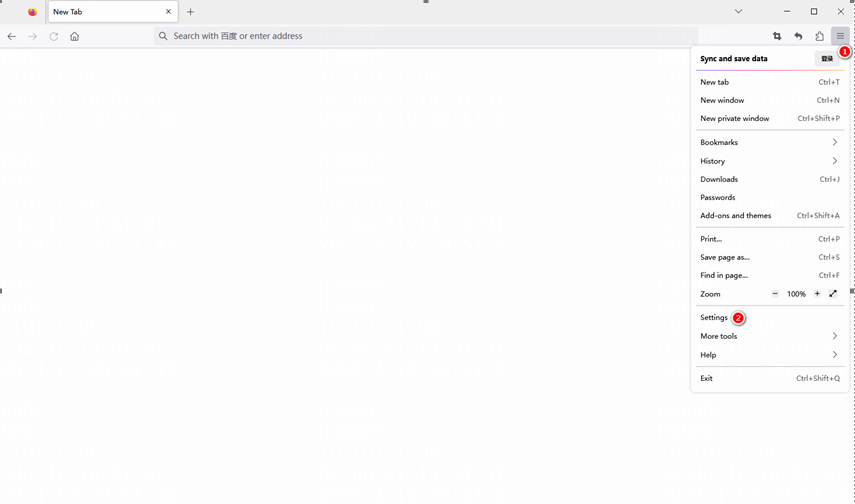
2.Select Privacy & Security, and then click Clear Data…. In the dialog box that opens, click Clear.
Figure 13 Clearing data
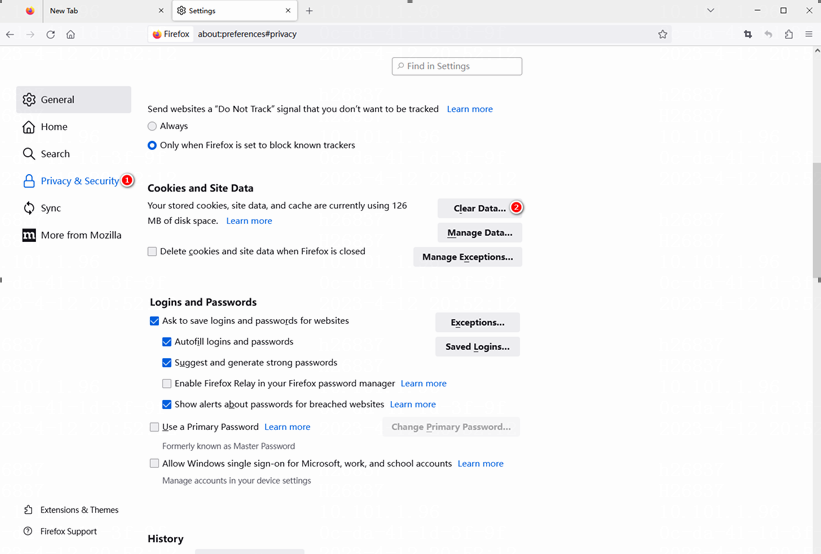
Figure 14 Clearing all history records
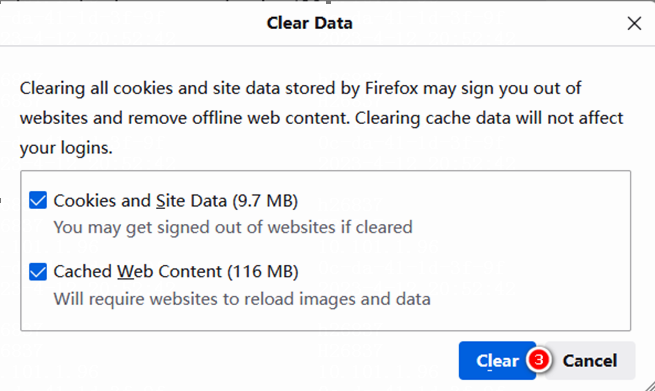
Deleting the browsing history in Chrome
1.Click the Customize and control Google Chrome menu icon, and then select Settings from the menu that opens.
Figure 15 Customize and control Google Chrome menu
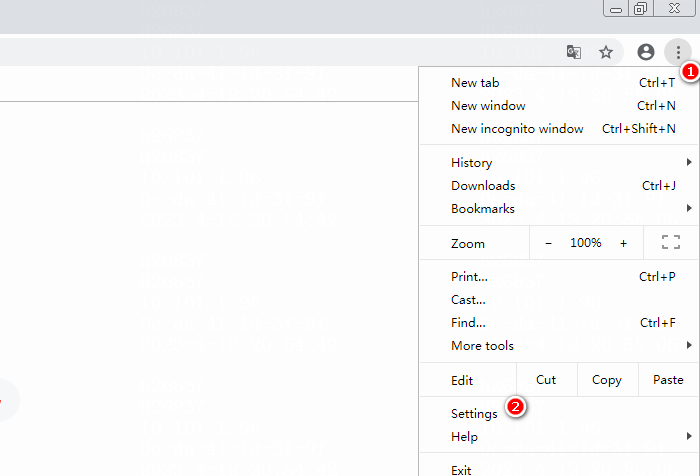
2.Select Privacy and security, and then click Clear browsing data…. In the dialog box that opens, click Clear data.
Figure 16 Clearing browsing data
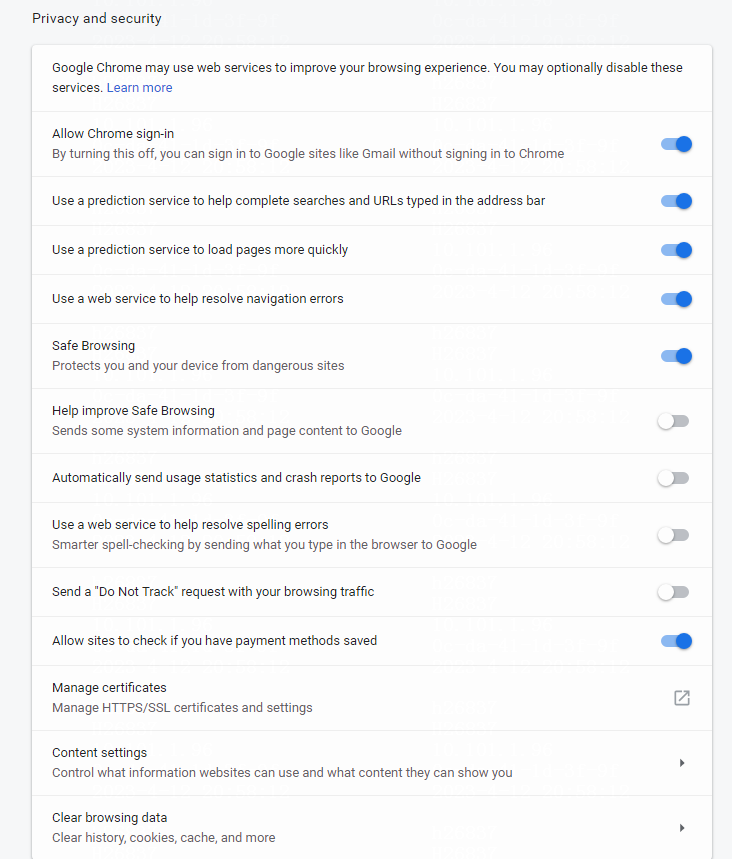
Figure 17 Clearing browsing data
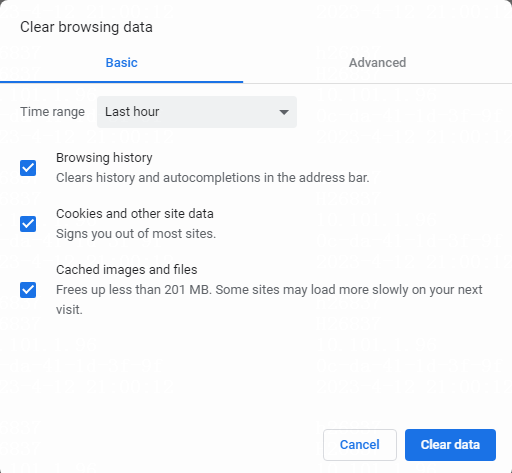
Deleting the browsing history in Safari
1.Select Safari > Preferences…. In the dialog box that opens, select Show Develop menu in menu bar.
Figure 18 Selecting Preferences…
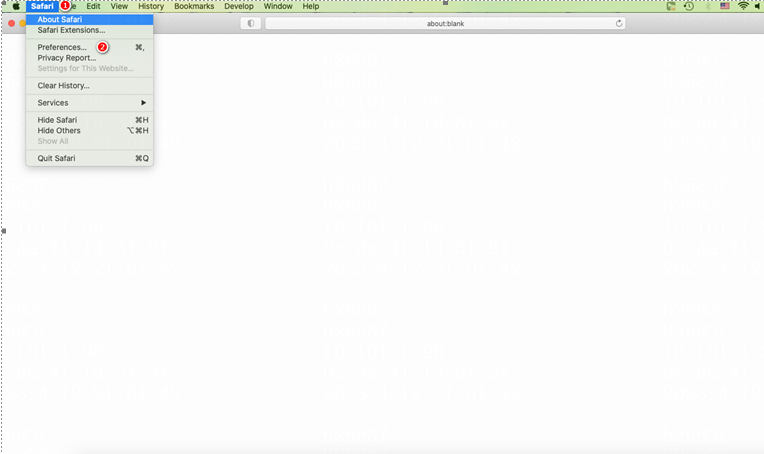
Figure 19 Selecting Show Develop menu in menu bar
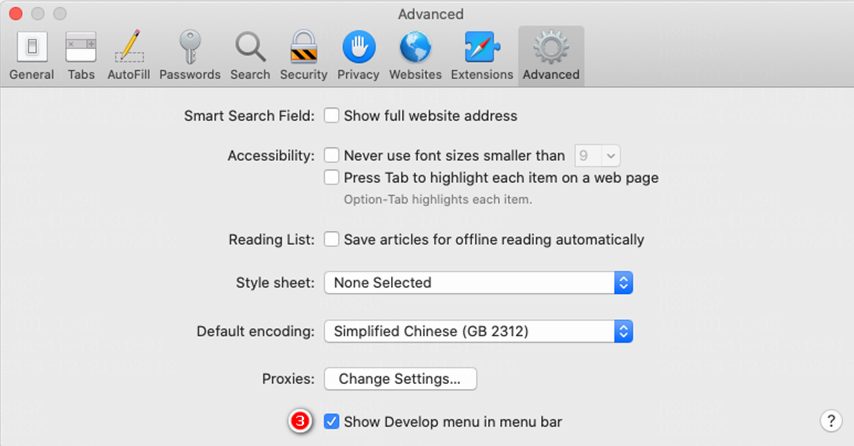
3.Select Develop and then click Empty Caches.
Figure 20 Clearing caches
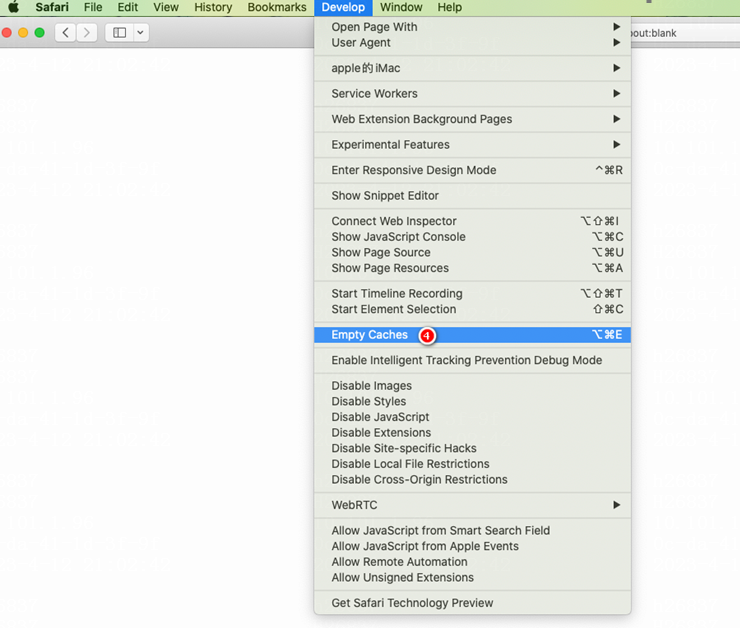
Acronym | Full name |
HDM | Hardware Device Management |
BIOS | Basic Input and Output System |
FIST | Fast Intelligent Scalable Toolkits |
REPO | Repository |
SDS | Smart Diagnosis System |
RAID | Redundant Arrays of Independent Disks |
MCA | Machine Check Architecture |
Appendix D Resolved vulnerabilities
Resolved vulnerabilities in HDM-1.14
An attacker who is able to inject WLAN frames can cause a buffer overflow in the ieee80211_bss_info_update function in net/mac80211/scan.c.

